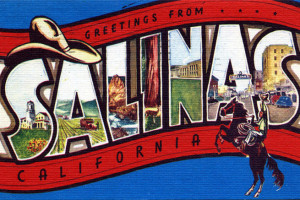California Gov. Jerry Brown Signs Bill Mandating the Use of PLA
California Gov. Jerry Brown (D) this week signed legislation designed to expedite the construction of a critical water infrastructure project in the Salinas Valley.
Unfortunately, provisions in the bill require the authority procuring the project to mandate the use of a wasteful and discriminatory project labor agreement (PLA). As a result, the local agency has decided not to take advantage of the design-build procurement option authorized by the bill and an opportunity for increased efficiency is wasted—all because the California legislature had to include a PLA.
A.B. 155, written by Assemblyman Luis Alejo (D), authorizes the use of design-build procurement methods on a $25 million water infrastructure project in the Salinas Valley as long as the authority in charge requires contractors on the project to enter into a PLA as a condition of performing work on the project.
This bill is groundbreaking for all the wrong reasons. For the first time in the state’s history, the California government is requiring a local government entity to implement a PLA mandate in order to access an industry-recognized procurement method.
Assemblyman Alejo claimed in a recent op-ed published by The Monterey Herald that the PLA requirement will, “prevent strikes, lockouts and work stoppages during the duration of the project.” As has been documented on this blog, it is a myth that construction project owners (public and private) need PLAs to prevent strikes and other labor unrest. Union bosses use the threat of strikes and labor unrest as a tool to extort PLA mandates from construction owners in an attempt to grow their shrinking market share.
Dan Walters, noted columnist for The Sacramento Bee, wrote a column Sept 16 while the bill was awaiting action by Gov. Brown. Here are the highlights:
Assembly Bill 155 by Assemblyman Luis Alejo, D-Watsonville, would give the Monterey County Water Resources Agency authority to use a “design-build” contract for linking two of its reservoirs with a pipeline.
Such authority is not unusual, but AB 155 goes further by requiring the agency to have a “project labor agreement” for the contract, meaning, in effect, that it could use only a unionized contractor.
Public works projects already pay “prevailing wages,” usually meaning union wage rates, but AB 155 is the latest front in the political war over project labor agreements, which exclude the majority of contractors that are nonunion.
Brown often touts “subsidiarity” – allowing local governments to make decisions – and since Monterey officials oppose AB 155’s provisions, his action will reveal whether he really means it, or it’s just a buzzword.
Governor Brown signed A.B. 155 into law on Tuesday, Sept. 30.
Yesterday, The Monterey Herald reported the Monterey County Water Resources Agency had decided not to utilize the design-build process, and will instead use the traditional design-bid-build process. Here are the highlights from the Herald’s coverage:
County water agency general manager David Chardavoyne said the legislation would actually make the project cost more and take longer due to a more complex procurement process. He said the county will likely bypass the design-build process outlined in the new law because it will need a completed project design before going to voters for a Prop. 218 assessment needed to help fund the pipeline.
Chardavoyne said the county isn’t required to employ the design-build process, and can use the more traditional design-bid-build process. He said one of the original purposes of the legislation — expediting the project to allow construction to start by the spring in order to qualify for drought grant funding — is no longer a realistic expectation. He said the project will also likely require a full environmental impact report.
As we noted in our post last week, Gov. Brown appears to care about pleasing construction union bosses more than adhering to the principle of subsidiarity—the governing philosophy he touts that dictates decisions should be made by the lowest level of government possible to ensure public policies address local conditions.
This is another sad example of the governor putting special interest groups ahead of taxpayers and local governments inside the state.












